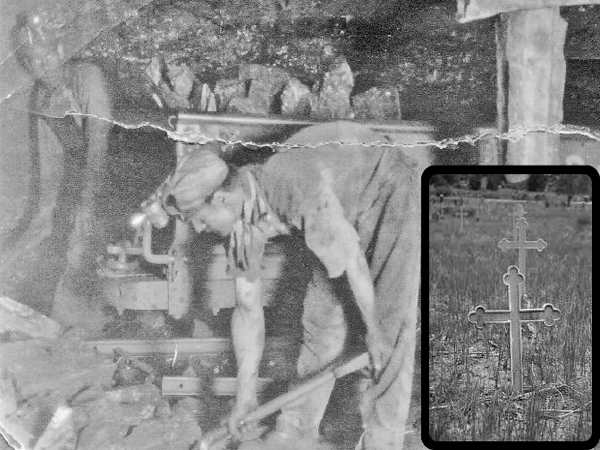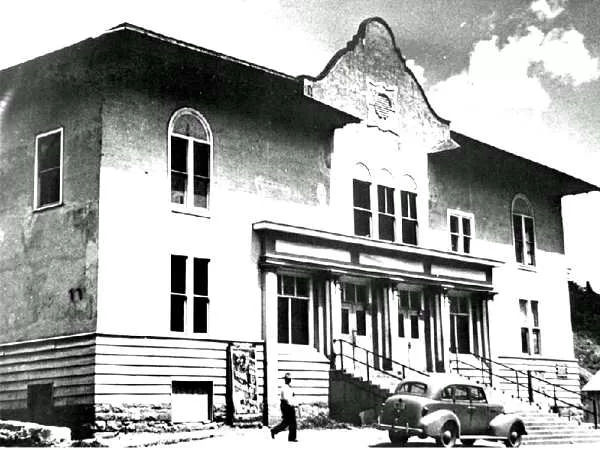Dawson, New Mexico, once a thriving mining town with a population of 9,000, is now nothing more than a ghost town. Located 17 miles northeast of Cimarron, it’s known for two of the worst coal mining accidents in American history, leaving a haunting legacy that still lingers today.
The Rise and Fall of Dawson
In 1906, the Phelps Dodge Corporation purchased the Dawson mines, with grand ambitions to modernize the town. At its peak, Dawson was a bustling community, complete with a company-owned Mercantile Department Store, a modern hospital, a theater, a swimming pool, bowling alley, baseball park, golf course, and even an opera house. The town also had two elementary schools and a large high school, whose teams won state championships. Additionally, Phelps Dodge constructed a steam-powered electric plant that not only supplied power to Dawson but also to several nearby towns in New Mexico and Colorado.
The town attracted immigrant miners from various countries, including Italy, China, Poland, Germany, Britain, Finland, Sweden, and Mexico, all seeking work in the dangerous but lucrative coal mining industry. The life of a miner was grueling, and the risks were high. Beyond the ever-present threat of explosions and cave-ins, miners faced long-term health effects like “black lung” from inhaling coal dust. Over time, accidents and fatalities became a grim reality for the town, slowly filling its cemetery with simple iron crosses marking the graves.

The First Tragedy: Stag Canyon Mine No. 2
Phelps Dodge had prided itself on the state-of-the-art equipment and safety measures in Stag Canyon Mine No. 2. Just days before the first tragedy struck, the New Mexico Inspector of Mines praised the mine for being free of gas and in excellent condition. Yet, on October 22, 1913, disaster struck.
At around 3 p.m., a massive explosion erupted from Stag Canyon Mine No. 2, sending a fiery blast 100 feet out of the tunnel’s mouth. The explosion shook homes as far as two miles away. Of the 286 miners who had reported to work that day, only 23 emerged alive. The cause of the explosion was determined to be a dynamite charge igniting coal dust in violation of mining safety laws. The disaster took the lives of 284 men, making it the second-worst mining accident of the century.
In the following weeks, the bodies of the miners were recovered and buried in the town’s cemetery, each grave marked with a simple iron cross. The tragedy left the town in mourning, and its impact would be felt for years to come.
The Second Disaster: Stag Canyon Mine No. 1
Just ten years after the first disaster, Dawson was struck by another devastating accident. On February 8, 1923, a mine train in Stag Canyon Mine No. 1 jumped the tracks and crashed into supporting timbers at the tunnel’s entrance. This collision ignited coal dust, leading to a catastrophic explosion. At the time, 123 miners were working underground.
Many of the women who had lost their husbands in the first disaster waited anxiously at the mine’s entrance, hoping their sons would emerge. Tragically, only two miners survived, both having been in an isolated section of the mine when the explosion occurred. The rest perished, and once again, the cemetery expanded, with many of the graves left unmarked due to the difficulty in identifying the bodies.
Dawson’s Decline and Legacy
Despite the tragedies, Dawson continued as a mining town for another three decades. However, as railroads switched to diesel-electric locomotives and homes transitioned to natural gas for heating, coal’s dominance as a fuel source began to wane. Although there was a brief resurgence of coal production during World War II, the Dawson mine ultimately shut down for good on April 30, 1950. Phelps Dodge sold the entire town to a salvage company in Phoenix, leaving Dawson to fade into history.
Today, little remains of Dawson aside from a few privately owned buildings and its haunting cemetery, which has earned a place on the National Register of Historic Places. The white iron crosses scattered across the hillside stand as solemn reminders of the town’s tragic past.
Haunting Stories from Dawson
After the first disaster in 1913, stories began to circulate about eerie occurrences in Dawson. People reported hearing wails and moans coming from the cemetery at night. Some claimed to see ghostly figures walking among the graves, only to vanish when approached. These sightings fueled rumors that the cemetery was haunted by the restless souls of the miners who had perished in the disasters.
Visitors today still report feeling cold spots near certain graves, even on the hottest days. Some hear male voices whispering warnings of danger, while others have encountered full-bodied apparitions that dissipate into thin air. The cemetery becomes particularly active at night, with many witnesses claiming to hear disembodied moans and see human-shaped patches of fog drifting through the area.
In one notable instance, my group visited Dawson’s cemetery during a follow-up investigation at the St. James Hotel in Cimarron. As we paid our respects, the atmosphere was undeniably charged with an unsettling energy. The men who lost their lives so abruptly over a hundred years ago seem to linger, their presence felt by those who dare to venture into their final resting place.
Conclusion
Dawson, New Mexico, may be a ghost town today, but its tragic history continues to resonate through the whispers of the past. The iron crosses that mark the graves of the lost miners stand as silent sentinels, watching over a town that once thrived but now lies in ruin. For those who visit, Dawson serves as a poignant reminder of the dangers of coal mining and the resilience of the human spirit.

